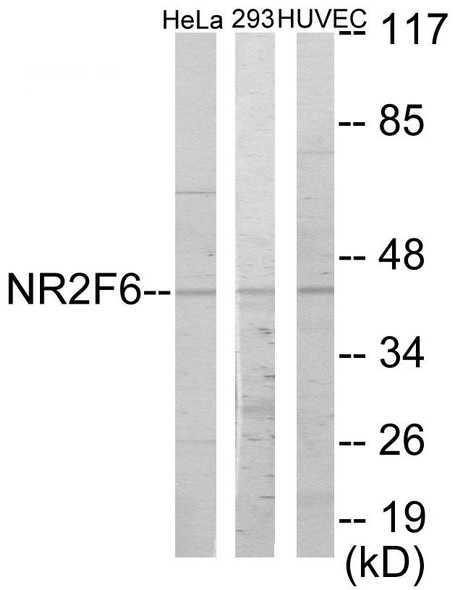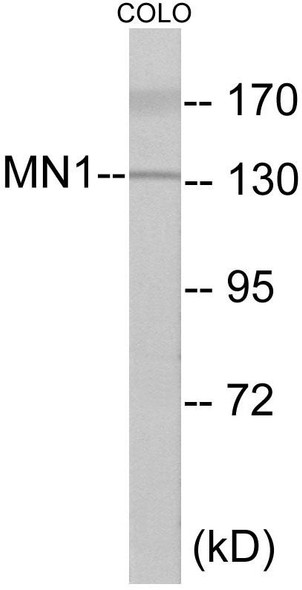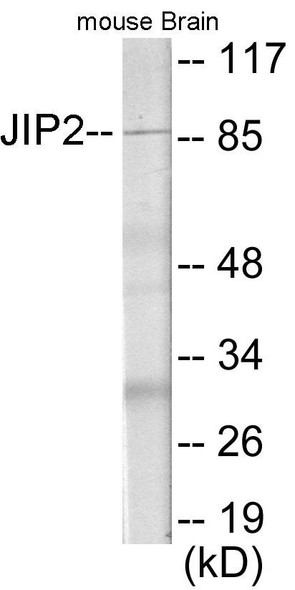Description
REQU Colorimetric Cell-Based ELISA
The Colorimetric Cell-Based ELISA Kit offered by AssayGenie is specifically designed for the accurate detection of angiogenin levels in human samples. This kit boasts high sensitivity and specificity, guaranteeing reliable and reproducible results for a variety of research applications.Angiogenin is a key protein involved in angiogenesis, the process of forming new blood vessels in the body. By promoting blood vessel formation and influencing cell proliferation, angiogenin plays a crucial role in conditions such as cancer, cardiovascular diseases, and neurodegenerative disorders.
As such, this ELISA kit is an essential tool for studying these conditions and potential therapeutic development.For researchers looking to measure angiogenin levels in serum, plasma, or cell culture supernatants, the Colorimetric Cell-Based ELISA Kit from AssayGenie provides accurate and dependable results, making it an invaluable asset for cutting-edge research in the field of angiogenesis and related diseases.
| Product Name: | REQU Colorimetric Cell-Based ELISA |
| Product Code: | CBCAB01170 |
| ELISA Type: | Cell-Based |
| Target: | REQU |
| Reactivity: | Human, Mouse |
| Dynamic Range: | > 5000 Cells |
| Detection Method: | Colorimetric 450 nmStorage/Stability:4°C/6 Months |
| Format: | 96-Well Microplate |
The REQU Colorimetric Cell-Based ELISA Kit is a convenient, lysate-free, high throughput and sensitive assay kit that can detect REQU protein expression profile in cells. The kit can be used for measuring the relative amounts of REQU in cultured cells as well as screening for the effects that various treatments, inhibitors (ie siRNA or chemicals), or activators have on REQU.
Qualitative determination of REQU concentration is achieved by an indirect ELISA format. In essence, REQU is captured by REQU-specific primary antibodies while the HRP-conjugated secondary antibodies bind the Fc region of the primary antibody. Through this binding, the HRP enzyme conjugated to the secondary antibody can catalyze a colorimetric reaction upon substrate addition. Due to the qualitative nature of the Cell-Based ELISA, multiple normalization methods are needed:
| 1. | A monoclonal antibody specific for human GAPDH is included to serve as an internal positive control in normalizing the target absorbance values. |
| 2. | Following the colorimetric measurement of HRP activity via substrate addition, the Crystal Violet whole-cell staining method may be used to determine cell density. After staining, the results can be analysed by normalizing the absorbance values to cell amounts, by which the plating difference can be adjusted. |
| Database Information: | Gene ID: 5977, UniProt ID: Q92785, OMIM: 601671, Unigene: Hs.13495 |
| Gene Symbol: | REQU |
| Sub Type: | None |
| UniProt Protein Function: | requiem: May be a transcription factor required for the apoptosis response following survival factor withdrawal from myeloid cells. Might also have a role in the development and maturation of lymphoid cells. Belongs to the requiem/DPF family. |
| UniProt Protein Details: | Protein type:Apoptosis; C2H2-type zinc finger protein Chromosomal Location of Human Ortholog: 11q13 Cellular Component: centrosome; cytoplasm; intracellular membrane-bound organelle; nuclear chromatin; nucleoplasm Molecular Function:protein binding; zinc ion binding Biological Process: apoptosis; regulation of transcription, DNA-dependent; transcription, DNA-dependent |
| NCBI Summary: | The protein encoded by this gene is a member of the d4 domain family, characterized by a zinc finger-like structural motif. This protein functions as a transcription factor which is necessary for the apoptotic response following deprivation of survival factors. It likely serves a regulatory role in rapid hematopoietic cell growth and turnover. This gene is considered a candidate gene for multiple endocrine neoplasia type I, an inherited cancer syndrome involving multiple parathyroid, enteropancreatic, and pituitary tumors. [provided by RefSeq, Jul 2008] |
| UniProt Code: | Q92785 |
| NCBI GenInfo Identifier: | 2842711 |
| NCBI Gene ID: | 5977 |
| NCBI Accession: | Q92785.2 |
| UniProt Secondary Accession: | Q92785,A8K7C9, B4DT58, |
| UniProt Related Accession: | Q92785 |
| Molecular Weight: | 23,599 Da |
| NCBI Full Name: | Zinc finger protein ubi-d4 |
| NCBI Synonym Full Names: | double PHD fingers 2 |
| NCBI Official Symbol: | DPF2 |
| NCBI Official Synonym Symbols: | REQ; UBID4; ubi-d4 |
| NCBI Protein Information: | zinc finger protein ubi-d4 |
| UniProt Protein Name: | Zinc finger protein ubi-d4 |
| UniProt Synonym Protein Names: | Apoptosis response zinc finger protein; BRG1-associated factor 45D; BAF45D; D4, zinc and double PHD fingers family 2; Protein requiem |
| Protein Family: | Zinc finger protein |
| UniProt Gene Name: | DPF2 |
| UniProt Entry Name: | REQU_HUMAN |
| Component | Quantity |
| 96-Well Cell Culture Clear-Bottom Microplate | 2 plates |
| 10X TBS | 24 mL |
| Quenching Buffer | 24 mL |
| Blocking Buffer | 50 mL |
| 15X Wash Buffer | 50 mL |
| Primary Antibody Diluent | 12 mL |
| 100x Anti-Phospho Target Antibody | 60 µL |
| 100x Anti-Target Antibody | 60 µL |
| Anti-GAPDH Antibody | 60 µL |
| HRP-Conjugated Anti-Rabbit IgG Antibody | 12 mL |
| HRP-Conjugated Anti-Mouse IgG Antibody | 12 mL |
| SDS Solution | 12 mL |
| Stop Solution | 24 mL |
| Ready-to-Use Substrate | 12 mL |
| Crystal Violet Solution | 12 mL |
| Adhesive Plate Seals | 2 seals |
The following materials and/or equipment are NOT provided in this kit but are necessary to successfully conduct the experiment:
- Microplate reader able to measure absorbance at 450 nm and/or 595 nm for Crystal Violet Cell Staining (Optional)
- Micropipettes with capability of measuring volumes ranging from 1 µL to 1 ml
- 37% formaldehyde (Sigma Cat# F-8775) or formaldehyde from other sources
- Squirt bottle, manifold dispenser, multichannel pipette reservoir or automated microplate washer
- Graph paper or computer software capable of generating or displaying logarithmic functions
- Absorbent papers or vacuum aspirator
- Test tubes or microfuge tubes capable of storing ≥1 ml
- Poly-L-Lysine (Sigma Cat# P4832 for suspension cells)
- Orbital shaker (optional)
- Deionized or sterile water
*Note: Protocols are specific to each batch/lot. For the correct instructions please follow the protocol included in your kit.
| Step | Procedure |
| 1. | Seed 200 µL of 20,000 adherent cells in culture medium in each well of a 96-well plate. The plates included in the kit are sterile and treated for cell culture. For suspension cells and loosely attached cells, coat the plates with 100 µL of 10 µg/ml Poly-L-Lysine (not included) to each well of a 96-well plate for 30 minutes at 37°C prior to adding cells. |
| 2. | Incubate the cells for overnight at 37°C, 5% CO2. |
| 3. | Treat the cells as desired. |
| 4. | Remove the cell culture medium and rinse with 200 µL of 1x TBS, twice. |
| 5. | Fix the cells by incubating with 100 µL of Fixing Solution for 20 minutes at room temperature. The 4% formaldehyde is used for adherent cells and 8% formaldehyde is used for suspension cells and loosely attached cells. |
| 6. | Remove the Fixing Solution and wash the plate 3 times with 200 µL 1x Wash Buffer for five minutes each time with gentle shaking on the orbital shaker. The plate can be stored at 4°C for a week. |
| 7. | Add 100 µL of Quenching Buffer and incubate for 20 minutes at room temperature. |
| 8. | Wash the plate 3 times with 1x Wash Buffer for 5 minutes each time. |
| 9. | Add 200 µL of Blocking Buffer and incubate for 1 hour at room temperature. |
| 10. | Wash 3 times with 200 µL of 1x Wash Buffer for 5 minutes each time. |
| 11. | Add 50 µL of 1x primary antibodies (Anti-REQU Antibody and/or Anti-GAPDH Antibody) to the corresponding wells, cover with Parafilm and incubate for 16 hours (overnight) at 4°C. If the target expression is known to be high, incubate for 2 hours at room temperature. |
| 12. | Wash 3 times with 200 µL of 1x Wash Buffer for 5 minutes each time. |
| 13. | Add 50 µL of 1x secondary antibodies (HRP-Conjugated AntiRabbit IgG Antibody or HRP-Conjugated Anti-Mouse IgG Antibody) to corresponding wells and incubate for 1.5 hours at room temperature. |
| 14. | Wash 3 times with 200 µL of 1x Wash Buffer for 5 minutes each time. |
| 15. | Add 50 µL of Ready-to-Use Substrate to each well and incubate for 30 minutes at room temperature in the dark. |
| 16. | Add 50 µL of Stop Solution to each well and read OD at 450 nm immediately using the microplate reader. |
(Additional Crystal Violet staining may be performed if desired – details of this may be found in the kit technical manual.)






